Survival horror is a genre held in high regard by a lot of people in the gaming community. There aren’t many out there that don’t know Resident Evil, Silent Hill, or even Fatal Frame. But before any of those games, developers Infogrames released Alone in the Dark (1992). Considered by many to be one of the first survival horror games, Alone in the Dark (1992) showed players what the future of the genre could be.
Fast forward to 2024, and THQ Nordic, along with developers Pieces Interactive, have brought us a spiritual retelling of the original, aptly titled Alone in the Dark. You join Detective Carnby and Emily Hartwood as they visit the infamous Derceto Manor in hopes of finding Emily’s uncle, Jeremy. In what could have been an interesting revival of the series, the game unfortunately doesn’t do much in the way of innovation.
Interesting puzzles are few and far between, combat can be largely skipped, and the story can feel like you’re missing key information, even as you roll credits. I reviewed the game on PC, which felt reminiscent of the 2010s when ports were the far inferior version performance-wise. While it has some great ideas and environments to look at, you would probably get more enjoyment and scares turning the game off and sitting alone in the dark.
An amalgamation of plotlines and stories
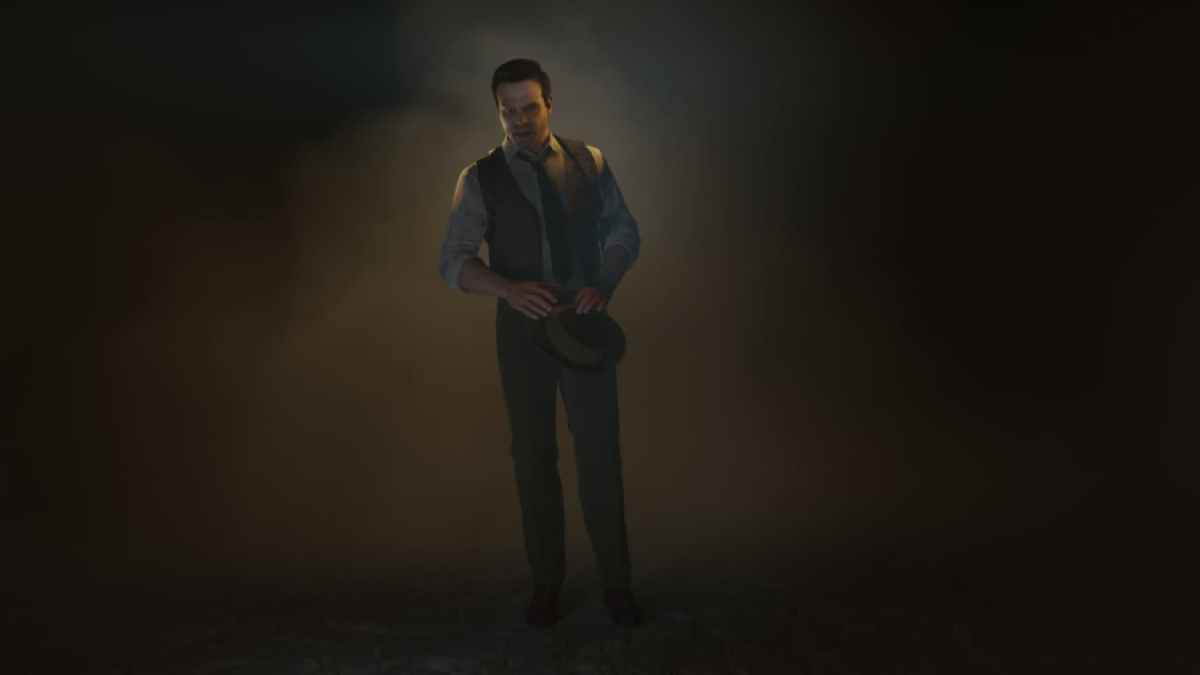
I’ll provide you with a bit of backstory on the Alone in the Dark series since the 2024 re-imagining takes cues from the first few games. The original game plays out similarly, story-wise, to the new game, with a few key changes. Of course, we can’t explicitly talk about certain story aspects, but the new Alone in the Dark re-introduces key characters from Alone in the Dark 1 and 2, with a few fresh faces sprinkled in.
The premise of reintroducing characters while giving them a new twist based on the events that happened to their original counterpart sounds intriguing. However, the idea falls flat as you’re scrambling to understand if you forgot key dialogue or if you’re missing knowledge from the previous games. Whichever you find yourself in this scenario, the outcome will leave you unsatisfied and confused.
As the developers have stated, Alone in the Dark’s story isn’t fully complete until you beat the game as both Carnby and Emily. Unfortunately, after you beat the game as one character, the other’s playthrough is significantly diminished in both playtime and enjoyment. It never feels like your curiosity is rewarded, even when you reach the end.

I played as Detective Carnby during my first playthrough, which feels like my first mistake in retrospect. There are major story beats with Carnby that don’t fully make sense until you experience both playthroughs, even if you read all the clues you pick up along the way; story beats that felt more succinct when playing as Emily.
This might be intentional since characters in the world respond more amicably towards Emily than Carnby. Having said that, it was hard to stay focused on the story when it felt incongruous with the gameplay.
Combat feels like an afterthought
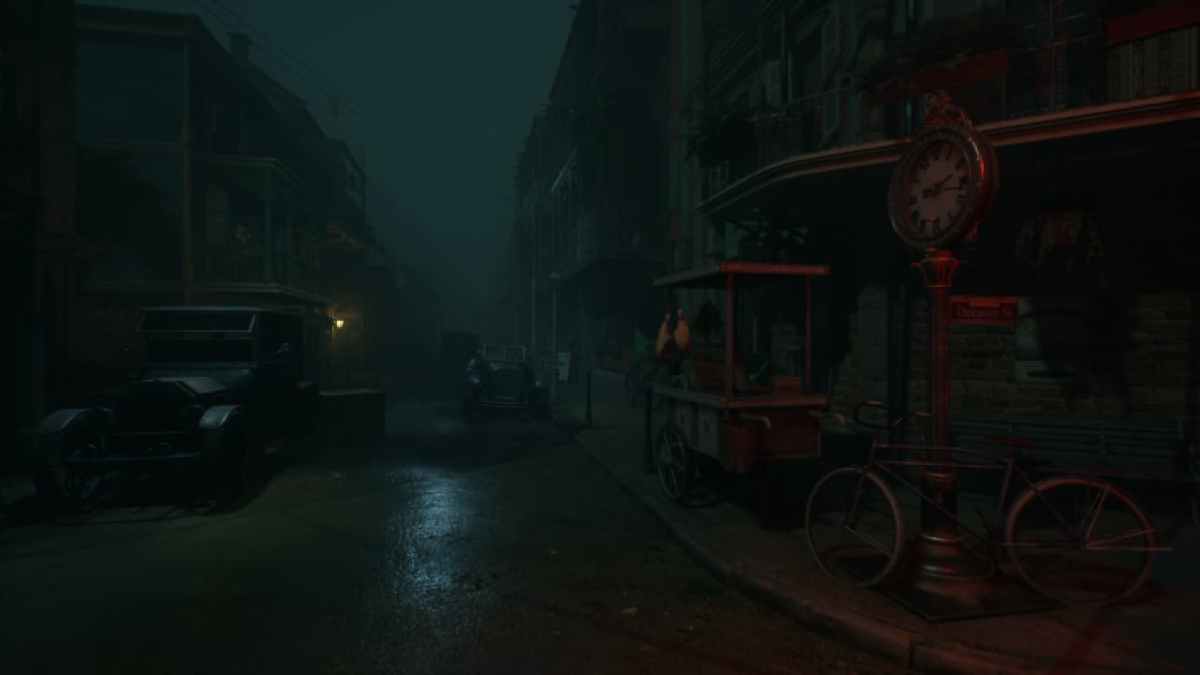
Where the game differs most from the 1992 version is how combat is handled within the confines of the environment. The majority of combat takes place after using a medallion to teleport to other planes of existence. Some of these areas are beautifully designed, and thankfully, the game takes you through a myriad of gorgeous, moody locations. You traverse through the dimly lit streets of the Louisiana French Quarter, visit a decrepit oil rig in the swamps, explore a sunken desert temple, and more. Sadly, the gorgeous environments you’re in don’t make up for the lackluster gameplay you experience throughout.
In total, you have three firearms to use to fend off Alone in the Dark’s horrors. The pistol and the Tommy Gun were discovered by advancing the story, with the shotgun being an optional objective. Enemies, on the other hand, come in a few different shapes and sizes. A narrative explanation of what these monsters want or who they serve is never provided, essentially making them inconsequential cannon fodder with no other purpose than to block your path.
Certain areas introduce new enemies that reflect the setting, such as a flying scarab in the temple, and a monster that swims through the ground at the oil rig. But those new enemies are extremely rare, leaving you to deal with one of two enemy types over and over again.
Ammo and health aplenty
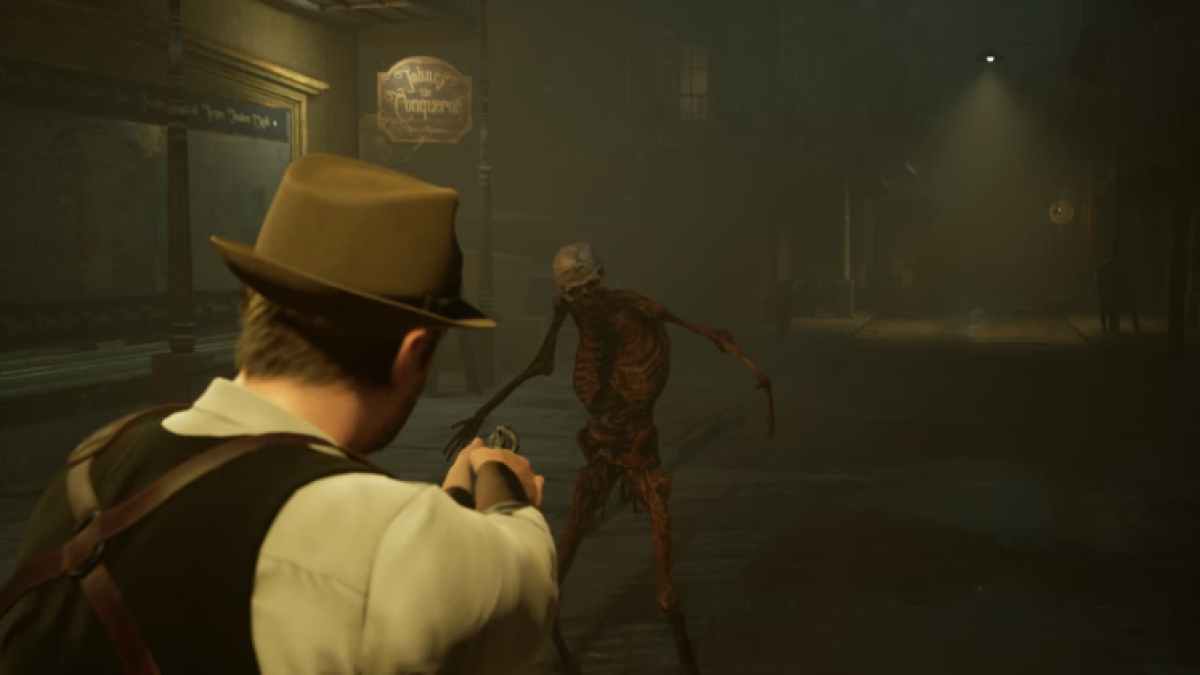
I played the game on Standard or the “intended” difficulty, and never felt any sense of fear or pressure. I’m sure playing on Hard might change some of these thoughts, but if a developer lets me know a certain difficulty is the intended way to experience the game, I’m going to judge it largely on that difficulty. Ammo was bountiful, so I never felt the classic Survival Horror ammo conservation anxiety, which put me on offense more than defense. I was able to pick fights with enemies rather than think about how to narrowly avoid an encounter.
There are throwable objects present in Alone in the Dark, reminiscent of bricks and beer bottles in The Last of Us. Unlike TLOU, you can’t add these bricks and Molotovs to your inventory. Instead, you have to throw them from wherever they spawn. This makes for awkward moments where you’re slowly shuffling around, Molotov in hand waiting for the next enemy.
Got hurt while trying to dodge a charging monster? Don’t worry — you’ll rarely worry about running out of health items. Alone in the Dark employs a Resident Evil 7-type healing system in the form of a bottle of alcohol. You collect more bottles to refill your heals, but thanks to the incredibly snappy aim assist (that cannot be turned off; at least not in the PC version), you shouldn’t have to worry about taking too much damage. The only time I died on my first playthrough was due to an environmental hazard rather than an actual enemy. If an enemy was out of my line of sight, I would just turn my camera a bit, hold LT, and immediately be tracking their head or body.
If you need ammo or health items, the game has lots of chests and boxes for you to loot. It’s just disappointing when you go through seven boxes in a row that have no items in them whatsoever.
The problem with stealth and bosses
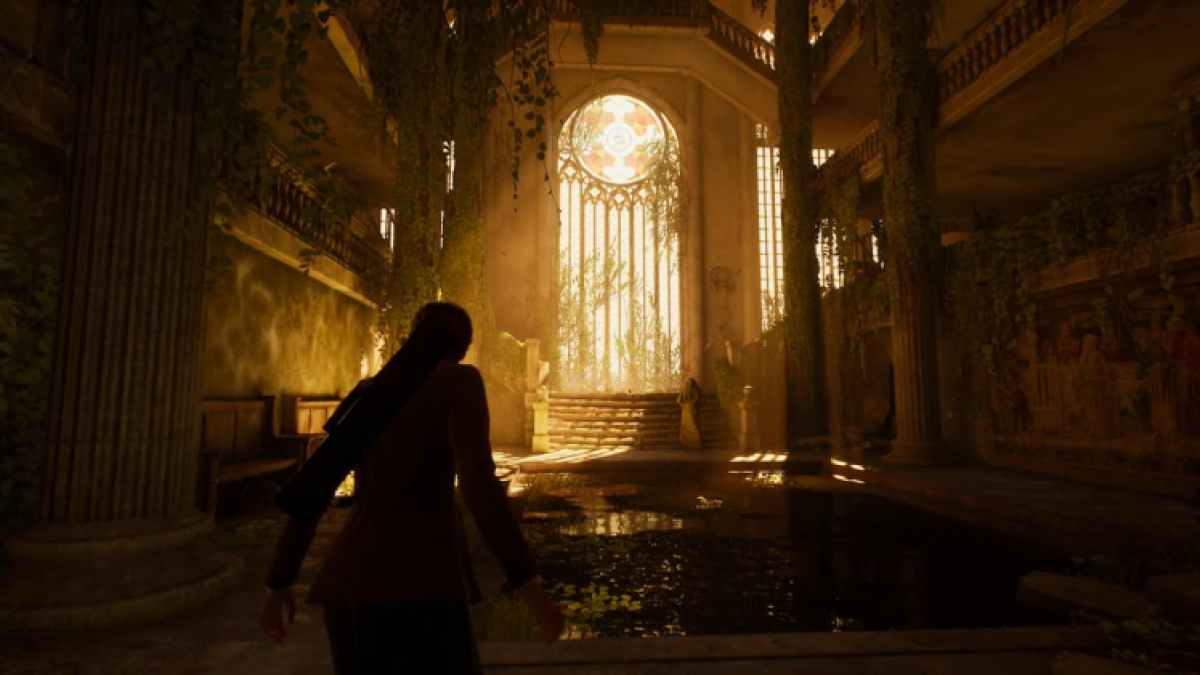
Alone in the Dark tries to implement a stealth system, allowing you to sneak around enemies in certain sections. The stealth system seems even more of an afterthought than most things in the game, and that’s saying a lot.
Areas that encourage stealth are normally sections that have a mix of idle and moving enemies. Every time I reached these sections I would make it past the sleeping enemies, only to get spotted by the moving ones due to their incredibly small pathways that I had to navigate. This made stealth feel like a hindrance in most places rather than an alternative approach. I never felt rewarded for sneaking past the monsters, as I usually would miss some ammo or other items and collectibles while taking a circuitous path around them that drew me away from items.
The gameplay overall in Alone in the Dark never felt like it was changing or evolving as it went on. The very first enemy I killed felt the same as the second to last boss of the game just with a few more weapons at my disposal that didn’t appreciably alter my playstyle.
On the topic of bosses and enemies, aside from the normal mobs, Alone in the Dark has only two bosses and one forced stealth section with a big bad enemy. But even the stealth section can be easily completed by charging ahead and never stopping. The final boss is indicative of how the combat feels as a whole: just muscling through bland combat so I could understand its story implications.
I can understand the game not trying to copy Alone in the Dark 2’s action-oriented gameplay with the intent of establishing a tone more in line with classic Resident Evil. So, in that vein, you might be wondering how Alone in the Dark’s puzzles feel and if Derceto Manor is a suitably creepy puzzle box of a setting? Well…
A Shell of Derceto Manor
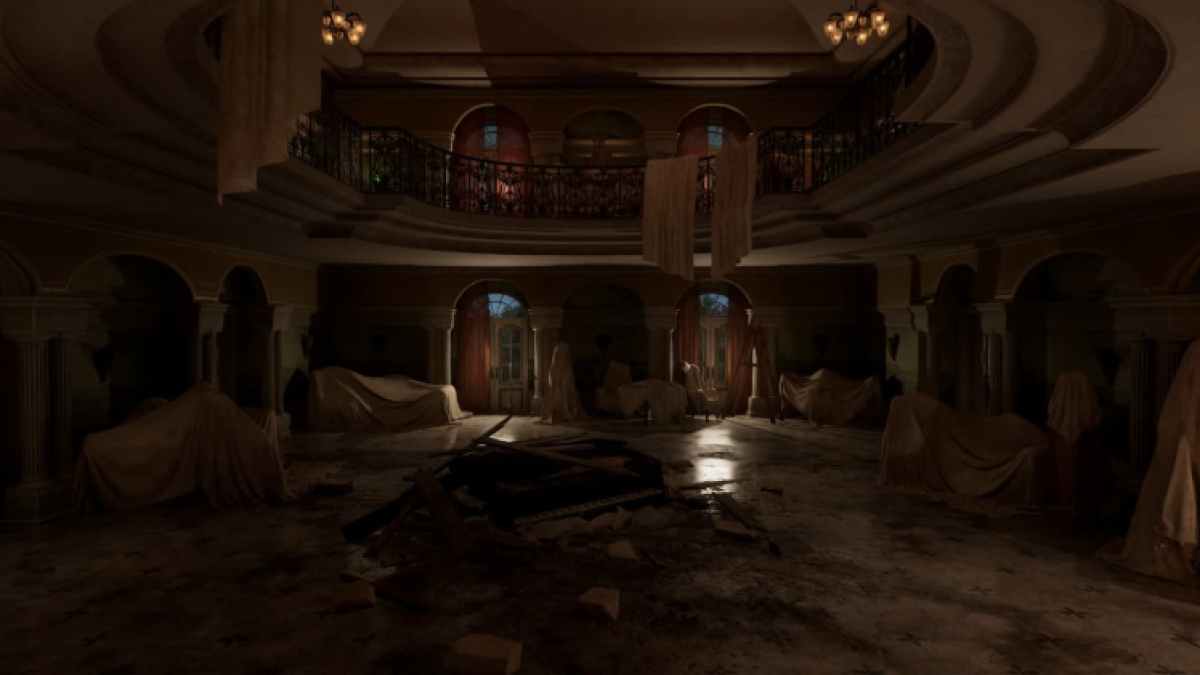
It’s sad to say, but Alone in the Dark wasn’t really that scary. Taking place in Derceto Manor, an asylum for the mentally unwell, the game rarely utilizes the fear factor of the estate. There were certain sections and a few jumpscares that showed promise and made me think I would be getting more of that spooky goodness around the corner. And then I’d be thrown back into its monotonous cycle.
You complete a puzzle or two, enter another world, fight some enemies, and watch a cutscene. This is Alone in the Dark in a nutshell, and it never really deviates from that formula. I wouldn’t have a problem with this if the big spooky manor you spend the entire game in didn’t feel so safe. Because when you experience the few truly unnerving, terrifying events that take place in Derceto, you’ll be yearning for more scares and wondering why there aren’t more of them.
There’s one moment where Derceto Manor rapidly changes form and throws a few enemies at you, but quickly changes back once you go through a doorway. I would have liked to see more combat events like this in Derceto, or potentially throw some enemies at you throughout the house once you reach a certain point in the story. But the enemies mostly stay out of the house, making it seem like a hub world connecting the story-relevant parts of the game.
Supporting Characters feel nonexistent
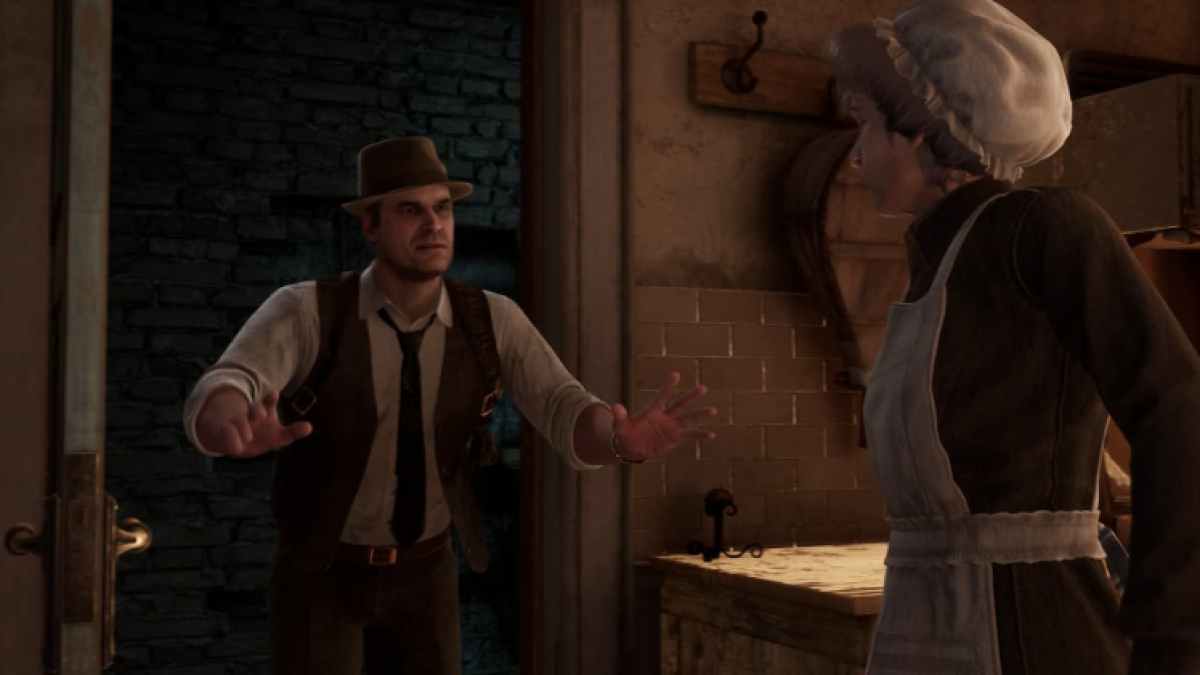
When you’re not solving the puzzles inside Derceto Manor, you’ll watch cutscenes with the patients and workers who live within. I say “watch cutscenes” because you’ll be exploring the vast empty grounds of the manor by yourself. The only time you interact with other people is when you enter a room they’re in, which prompts a cutscene. There are a few lines of dialogue you can listen to after the cutscene plays, but don’t expect them to wait there for you forever.
Once you leave the room they’re in, they’ll usually disappear into the ether, much like my interest in said character. As a whole, characters feel two-dimensional, only showing up to advance the plot after their introduction. It’s a shame since certain characters were taken from Alone in the Dark (1992) and its sequel, giving the devs a chance to either reinvent them or flesh them out. Neither of those things happen, and instead, each time you talk to a character it mostly feels like you’re talking to a hand puppet being fed lines.
The right answer is always the easiest
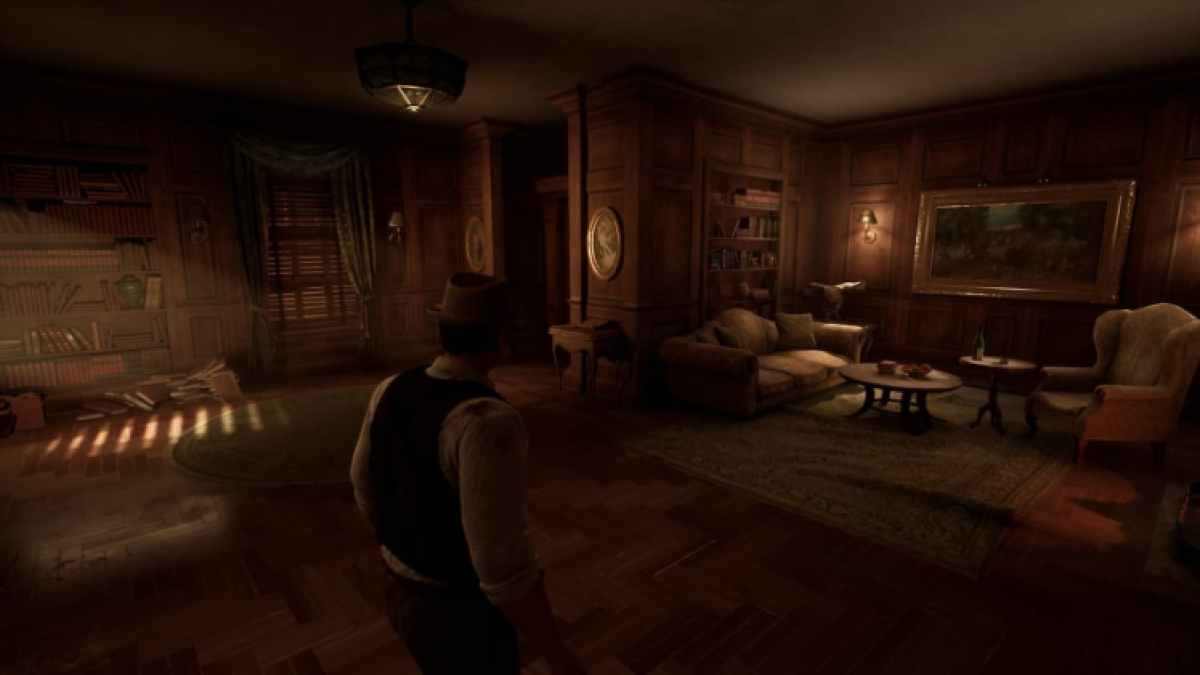
Up until now, I’ve been tip-toeing around Alone in the Dark’s puzzles. As a Survival Horror game, puzzles are an integral part of the experience and make up a large portion of Alone in the Dark’s gameplay. This is why it pains me to admit that almost every puzzle in Alone in the Dark treats the player like a child.
That’s not to say certain aspects and puzzles aren’t well crafted in their own right. I remember the first time I entered the sunken temple. I was elated by the way the environment was designed around the puzzle itself. Or a puzzle in the later half of the game that required some real thinking.
Unfortunately, the majority of puzzles are lackluster, with some forcing you to find single-use items. I thought some of these items would be in my inventory for a while, as they were common items in survival horror games. But ultimately they were used once or twice and then removed from my inventory as if they were never there.
And boy oh boy do I have experience with Alone in the Dark and items disappearing.
The performance and bugs are the true horror
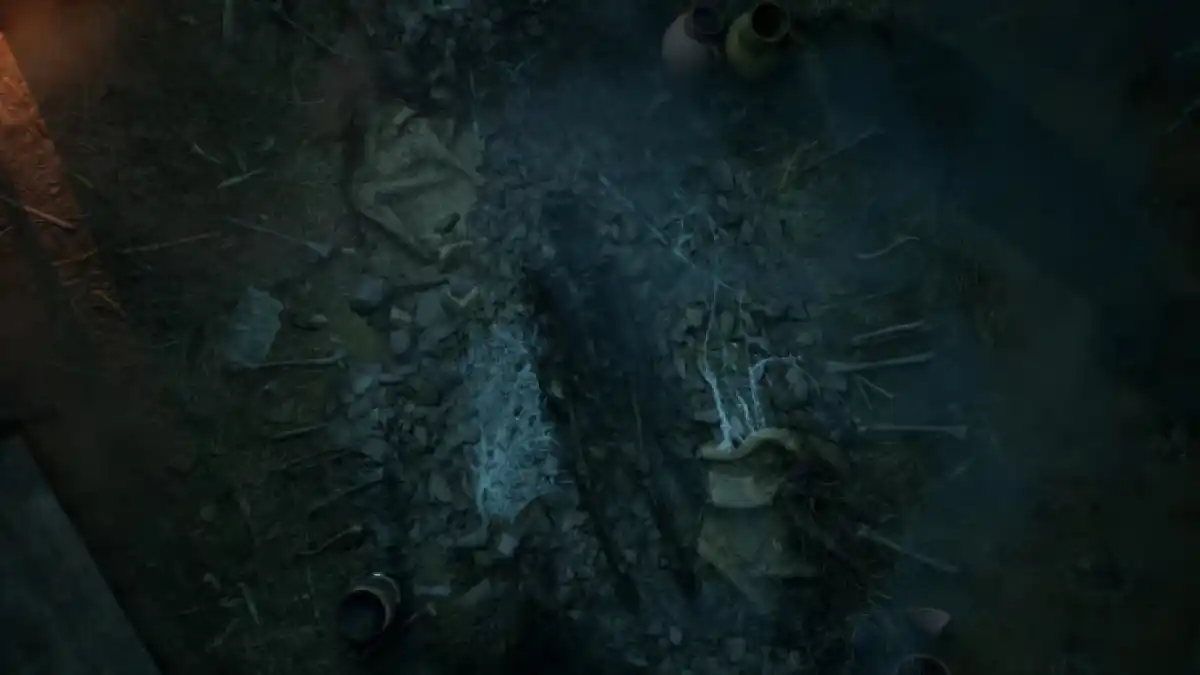
As I stated at the beginning, I reviewed the PC version of Alone in the Dark. So I can’t speak on the stability of console versions, but this game can be downright broken at certain parts of the game. It took me about nine and a half hours to beat my first playthrough as Detective Carnby, and only five hrs to beat Emily’s. I recorded over seven crashes in total, with the first one happening only an hour and a half into the game. I expect some of these to be fixed by the day-one patch, but I feel like there are far too many to all be covered out the gate.
When the game wasn’t crashing, I would experience frame stutters whenever the game attempted to load new assets. This is especially prevalent when you’re wandering around Derceto and the world suddenly shifts. Before I could see anything, my game would pause for a split second before thrusting me into a new area. Not only was this jarring, but it ruined a few of the key spooky moments.
But the largest issue I ran into that completely broke the game for me, involved getting the different endings with collectibles.
The never-ending collectibles
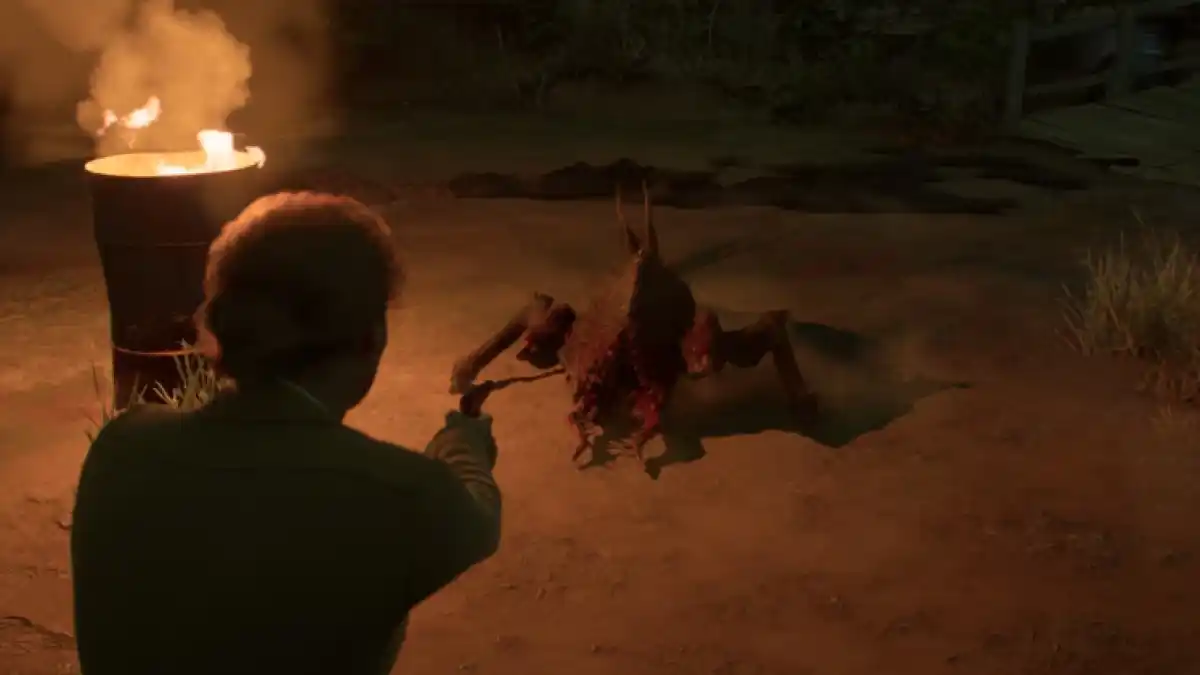
In Alone in the Dark, you find collectibles known as Lagniappes throughout your journey. Sets connect these items, and completing them earns you bonuses. These bonuses come in the form of extra lore, the shotgun we talked about earlier, and even secret endings. When you grab your first Lagniappe, the game tells you that specific sets can’t be completed without doing both playthroughs and lets you know that each collectible transfers between playthroughs.
To make a long story short, right before the final boss of Emily’s playthrough, the game decided to take away every collectible I didn’t earn with Emily. This bug removed the majority of my Lagniappes as I grabbed most of them in my first playthrough.
Without the required collectibles, I was locked out of the alternate ending. As soon as I attempted to load a previous save, my collectibles retroactively removed themselves as they did in Emily’s playthrough, forcing me to play through the game once again to try and get the endings.
Because of this, I ended up beating Alone in the Dark as Emily three different times in one day to try and get a different ending without the game removing all the Lagniappes. When the game relies so much on replayability, having a game-breaking bug such as this significantly reduces the game’s quality. The process I tried was a best-case scenario, as the worst-case version involves using the in-game feature to wipe all your saves and collectibles and starting all over again.
A mixed bag of performances
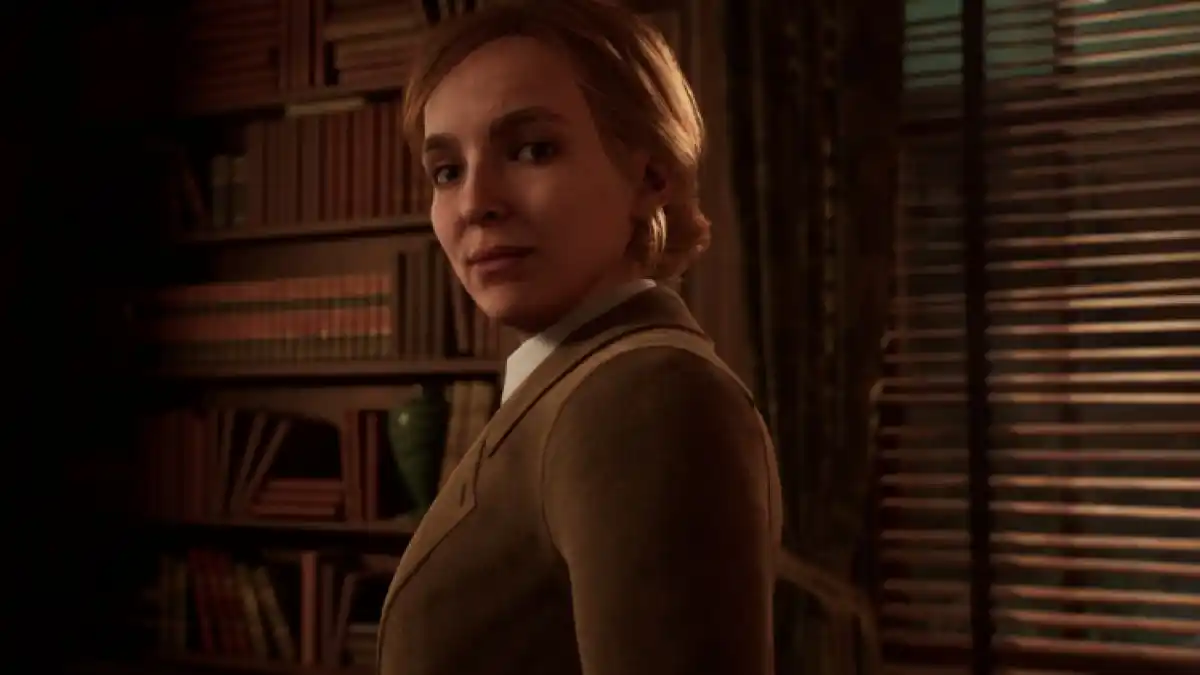
On the other hand, character performances throughout the game give off some very strange vibes, and not in a good way. Where the voice actors shine in Alone in the Dark is the lore and clue items you have in your inventory. Every piece of paper you find throughout the game is voiced beautifully. It further immersed me in the game as well as convey the feelings and intentions of a character, sometimes better than the actual cutscenes.
As far as the performances of David Harbour (Stranger Things) and Jodie Comer (Killing Eve) as Detective Carnby and Emily Hartwood respectively, they both work well with what they are given. Jodie Comer as Emily definitely has more to work with and is given much more substance with her unique cutscenes. David Harbour as Carnby feels a bit out of place, and his unique cutscenes and settings carry less weight to the overarching story than Emily.
As Emily, the latter half of Alone in the Dark introspectively views her character and the choices she’s made in her life thoughtfully and thoroughly. Detective Carnby’s story, on the other hand, feels rushed and seems like it’s there to push Carnby to the end of the game. However, I did enjoy Carnby as a character and Harbour’s performance through the lens of Emily way more than I enjoyed playing him.
Prolonging the inevitable
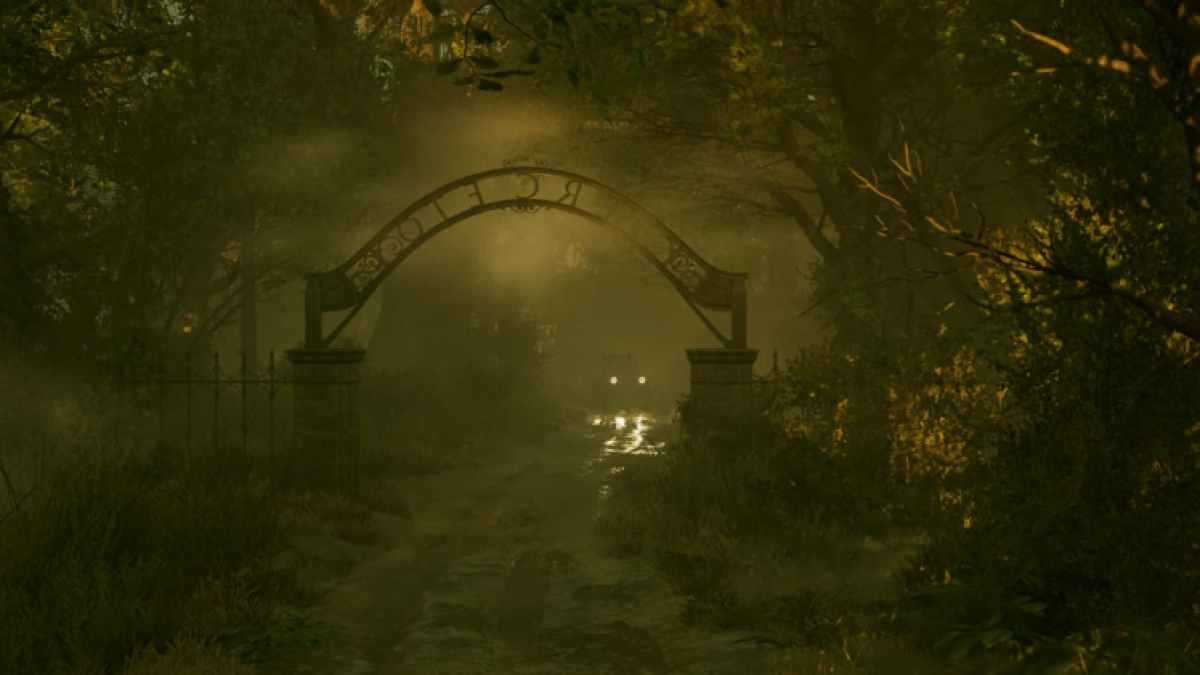
In Alone in the Dark (1992), Detective Carnby’s motivation for investigating Derceto Manor is substantially different enough from Emily’s that it warrants a playthrough as Emily to encourage you to experience both of their perspectives. Pieces Interactive’s Alone in the Dark puts both characters on the same track, with only slight deviations toward the end before meeting back up for the finale. This type of storytelling ultimately detracts from one character as the other shares more of the limelight and connections to the overall story. It’s a game that promises at least two different paths, but really, only offers one and then a more diminished one.
I felt like I was only floating through the miasma of Alone in the Dark’s combat and puzzles to reach the next story beat. Fighting monsters turns into a slog, and the puzzles I enjoyed were sparsely scattered between too many others that felt like they were made to be solved as quickly as possible rather than be carefully considered. Supporting characters aren’t there for anything else other than to usher you off to the next story beat, with their best dialogue coming from the letters and clues in your inventory.
Alone in the Dark harkens back to survival horror games of yesteryear in every sense. For better and for worse (mostly worse), it often felt like like a throwback to the Xbox 360 era. I fear that Alone in the Dark will join these other games of a bygone era, because once I left Derceto Manor, I never wanted to look back.
- Beautiful enviroments
- David Harbour and Jodie Comer's performances anchor the story
- Plenty of collectibles to find
- Bugs and glitches hamper experience
- Enemies are repetitive and boring
- Environments are lifeless and dull

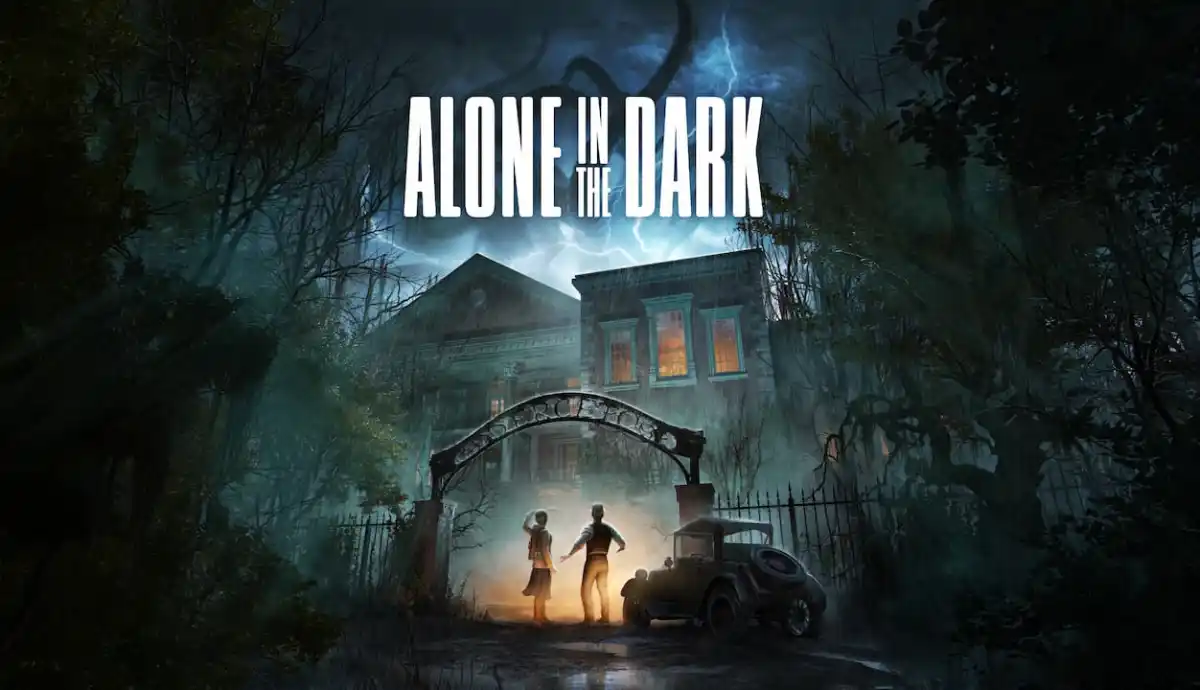





Published: Mar 19, 2024 10:00 am